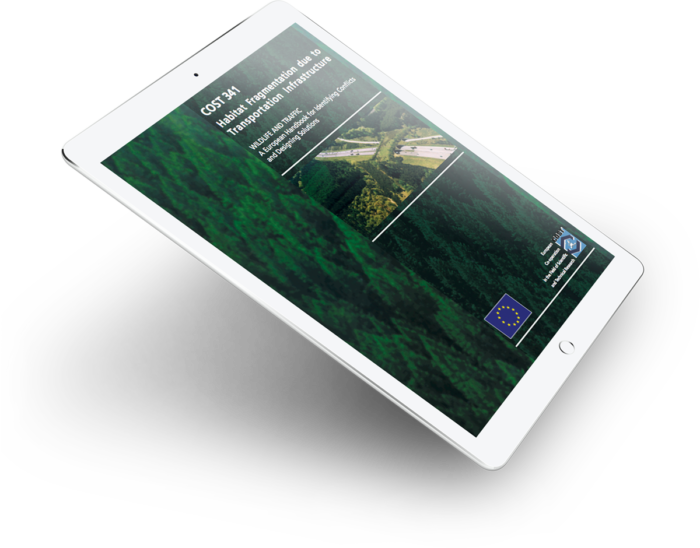Declaration of the IENE 2024 International Conference.
Prague, Czech Republique, 9 – 13 September 2024
Saving biodiversity in the headlight of future transport
We, the participants of the International Conference IENE 2024, acknowledge the profound challenges at the crossroads of infrastructure development, climate change, and biodiversity conservation. The significant impact of transport and energy infrastructures on climate change and biodiversity loss, coupled with their deep entanglement with economic growth, compels us to demand an even more urgent and transformative action to safeguard our future.
While recognising the effort and progress made so far by the sectors of transport and ecology, we emphasise the crucial importance of adhering to international commitments, policies, guidelines, and laws designed to halt and reverse nature loss, including the Paris Agreement, COP15’s Kunming-Montreal Global Biodiversity Framework, COP28’s climate action focus, the EU’s new Nature Restoration Law, and the Mitigation Hierarchy Framework.
Achieving transformative change requires focusing on the cumulative impacts of human activities on biodiversity, relying on robust, science-based knowledge, and reaching out beyond the transport and energy sector. Cross-sector collaboration, systemic economic reforms, behavioural and cultural shifts, and global cooperation are essential. Technological advancements alone—such as electric mobility, autonomous vehicles, and intelligent traffic systems, even alongside ecological design, nature-based solutions, and landscape adaptation—are not sufficient to halt biodiversity loss. In fact, their benefits may be nullified if the rise in consumption, energy and transport demand is continued.
To truly protect biodiversity (and our own wellbeing), we must fully respect the planetary boundaries and break free from the dependency on perpetual economic growth. A shift towards more holistic and ecologically sustainable land planning is imperative.
Therefore, we call upon policymakers, investors, authorities, companies, and academia to take the following actions:
- Mainstream biodiversity conservation in infrastructure: Plan, design and operate infrastructures that enhance biodiversity and ecosystem by integrating nature-based solutions and promoting ecological connectivity and integrity. Shift from merely minimising harm to actively pursuing restorative or net positive outcomes. Utilise tools and knowledge provided by research in e.g., the IENE handbook, from the earliest stages of strategic planning to minimise impacts on fauna and flora, and achieve a local net-gain for nature.
- Avoid new exploitation: Prioritise maintenance, upgrading, retrofitting, and restoration over new land exploitation for infrastructure. Focus on improving cost efficiency, future resilience and ecological adaptation of existing networks. Avoid building in unfragmented and roadless areas, favouring alternatives to meet transport and communication needs without new construction.
- Internalise externalities: Reflect the full environmental and social costs of transport and energy in its pricing, including noise, pollution, and habitat disruption. Additionally, apply non-monetary evaluation models to assess the true costs of infrastructure projects and support science-based decision-making.
- Support decentralisation and promote localised economies: Strengthen community resilience and sustainability by promoting local markets with small-scale industry and localised production. This reduces the need for long-distance commutes, transport and car dependency, and thus decreases infrastructure and energy consumption.
- Invest in Public and Active Transport: Shift from car-centric infrastructure to public and active transport by improving public networks. Provide sufficient services to encourage behavioural changes in transport users. Prioritise investments in sustainable and resilient infrastructure for public transport through innovative financing mechanisms.
- Use smart technologies in transport and energy infrastructure: Employ Artificial Intelligence and the Internet-of-Things to develop new solutions for biodiversity. Promote vehicles with eco-friendly designs, advanced vehicle systems and new communication technologies to enhance transport efficacy and reduce needs for more infrastructure.
- Mainstream monitoring and accountability: Develop transparent systems for monitoring the environmental and social impacts of energy and transport projects, using tools like new sustainability indices and Open Access to empirical data. Ensure regular public reporting on sustainability performances and key environmental indicators to foster stakeholder accountability and penalise non-compliance.
- Enhance knowledge and understanding: Support the development of a European Centre of Excellence dedicated to researching long-term and cumulative impacts of infrastructure on biodiversity. This is vital for ensuring that research is effectively utilised by operational stakeholders, integrating cumulative impact assessments into strategic planning and driving sustainable development to safeguard our natural heritage for future generations.
IENE helps achieving these goals by providing pan-european expertise and actively engaging in:
- International collaboration in research and development to share best practices and knowledge, harmonise policies, and to develop adaptable, science-based planning and mitigation strategies (e.g., IENE handbook and working groups).
- Communication and education of the public and stakeholders, raising awareness about the benefits of integrating biodiversity in infrastructure planning (e.g., IENE conferences and declarations).
- Policy advocacy for more sustainable and holistic land-management regulations, advocating for stronger and regulatory frameworks that incentivize retrofitting, offsetting, and restoration, and penalise unsustainable practices (e.g., IENE policy briefs).
We, the participants of the International Conference IENE 2024, call upon all stakeholders – policymakers, investors, authorities, companies, academia, and experts – to unite in implementing these critical actions.
Our collective efforts are crucial in ensuring that biodiversity conservation is not only integrated into infrastructure development but becomes a driving force for a sustainable future.
